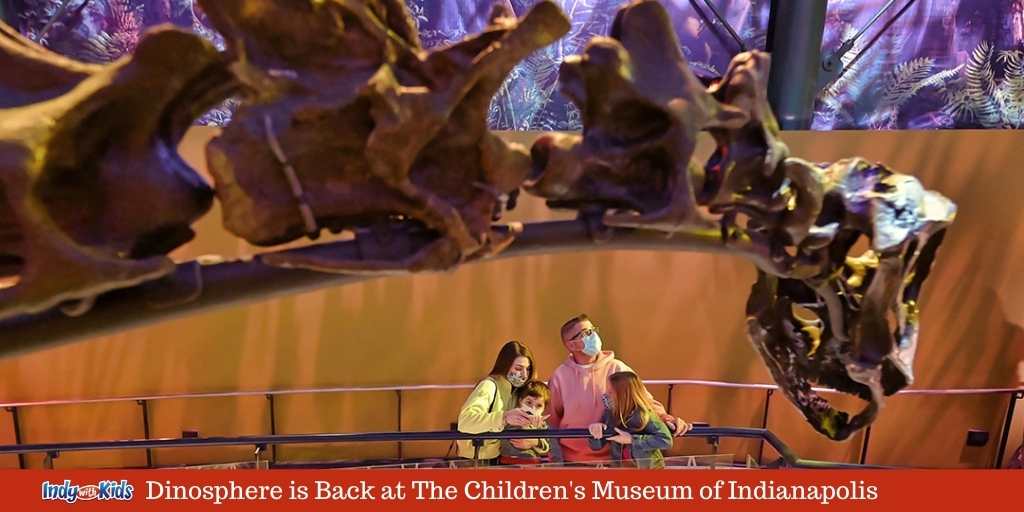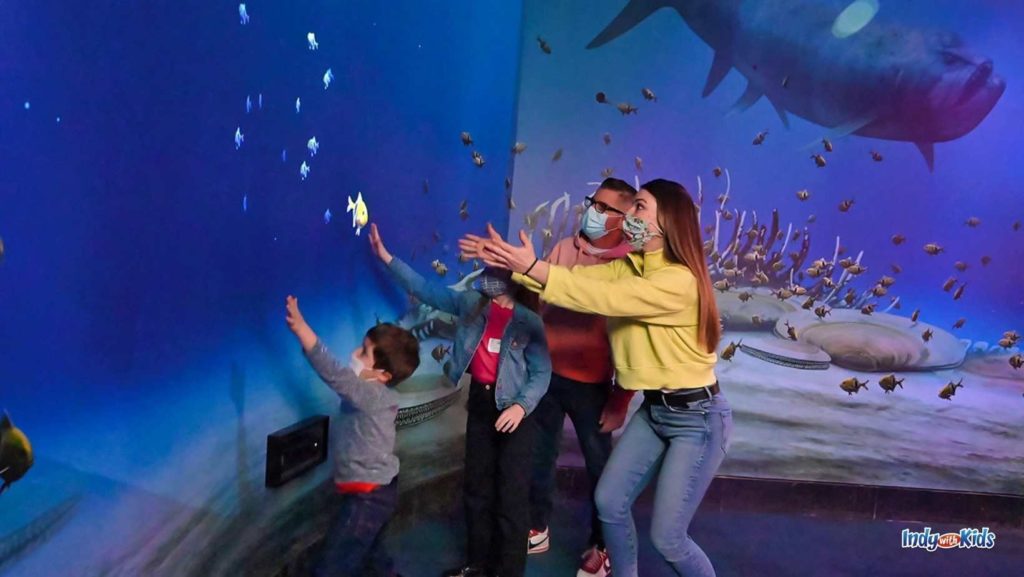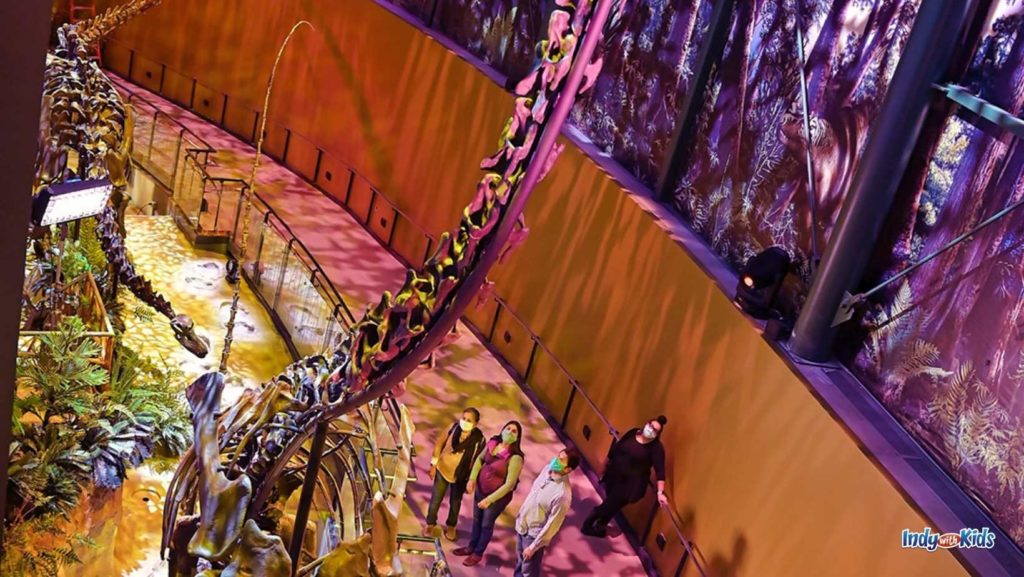Dinosphere is back, and it’s bigger & better than ever!
Imagine life 150 million years ago. The Earth shook with each footstep by massive dinosaurs
(stretching 60–80 feet, nose to tail) as they pounded the ground and searched for plants to
satisfy their huge appetites. Listen for the pitter-patter of smaller creatures racing for cover as theropods scavenged the area for their next meal. Hear the splashing and gurgling of
ocean waves as you discover a treasure trove of marine life, from massive monsters to
miniature shellfish.
Dinosphere at The Children’s Museum of Indianapolis
On March 19th, with each step into the NEW Dinosphere®: Now You’re in Their World at The Children’s Museum of Indianapolis, children and families come face-to-face—and in some cases, face-to-knee—with magnificent dinosaurs and marine reptiles that once dominated the world.
Visitors are fully immersed in a time long ago with magnificent sound and light shows, actor
interpreter performances and gallery interpreters who answer questions visitors didn’t even
know they had.
The museum brought in amazing new dinosaurs, including Giants of the Jurassic™ and
Monsters of the Mesozoic Seas™, which will join longtime favorites in Creatures of the Cretaceous™ to create this extraordinary new exhibit. Paleontologists from The Children’s Museum unearthed some of these fossils from its dig site in Wyoming known as The Jurassic Mile™.
Visitors will have to crane their necks way back to see the top of the first giant sauropod, which is posed as though it is rearing up on its hindquarters. It is followed by another sauropod that seems to be grazing behind it. An equally compelling find from the dig site that visitors will learn about is the discovery of hundreds of theropod teeth.
Monsters of the Mesozoic Seas Exhibit
The atmosphere of the ocean-themed section makes families feel like they are swimming beneath the waves alongside a sea creature reminiscent of the Loch Ness Monster. The Elasmosaurus, with its sharp, pointy, fang-like teeth and 23-foot-long neck, is posed to look like it is plunging into the water alongside visitors. A 20-foot-long Baptanodon had freakishly large eye sockets the size of dinner plates. The Sundance Sea, where Baptanodon once lived, wasn’t deep enough to get very dark, so its
enormous eyes were likely most useful for hunting prey at night. The Plioplatecarpus (a type of mosasaur) was one of the top predators in the ocean. They ate just about anything they could catch, including other mosasaurs. They used their double-hinged jaws and flexible skulls to open
their mouths wide.
Creatures of the Cretaceous Section
Creatures of the Cretaceous features dinosaurs that visitors to The Children’s Museum have come to know and love, including a couple of T. rex, a Gorgosaurus, and a mummified duckbill dinosaur. The
former Cinedome sets the perfect stage with a brilliantly colored sky that transitions from dawn to dusk to midnight (with meteor showers,) immersing families in the sights and sounds of the Cretaceous. Dracorex hogwartsia will remain on Level 2 by the main elevators.
Paleo Prep Labs
The museum’s scientists continue to work in the R.B. Annis Mission Jurassic Paleo Prep Lab and the Polly H. Hix Paleo Prep Lab, preparing fossils they brought back from the Jurassic Mile™ dig site. Visitors can watch them saw open giant field jackets that weigh 1–2 tons in one lab or put together the teeny tiny pieces of a fossil puzzle in the other lab. Our scientists enjoy answering questions about the bones and what different markings might mean.
Dinosphere Art Lab
Paleo art combines science and art to bring life to the everyday activities of dinosaurs. This area will help spark creativity and ignite imaginative play as visitors are invited to design their own dinosaur and scan the drawing. Then, they watch as their animated dino “hatches” from an egg and virtually joins other dinosaurs roaming the Earth on a giant projection screen. Trace a dinosaur trackway or feel two sides of a diplodocid sculpture (one fleshed out with scales and the detailing its bone structure). Or simply be inspired by the paintings, sculptures and comics on display.








